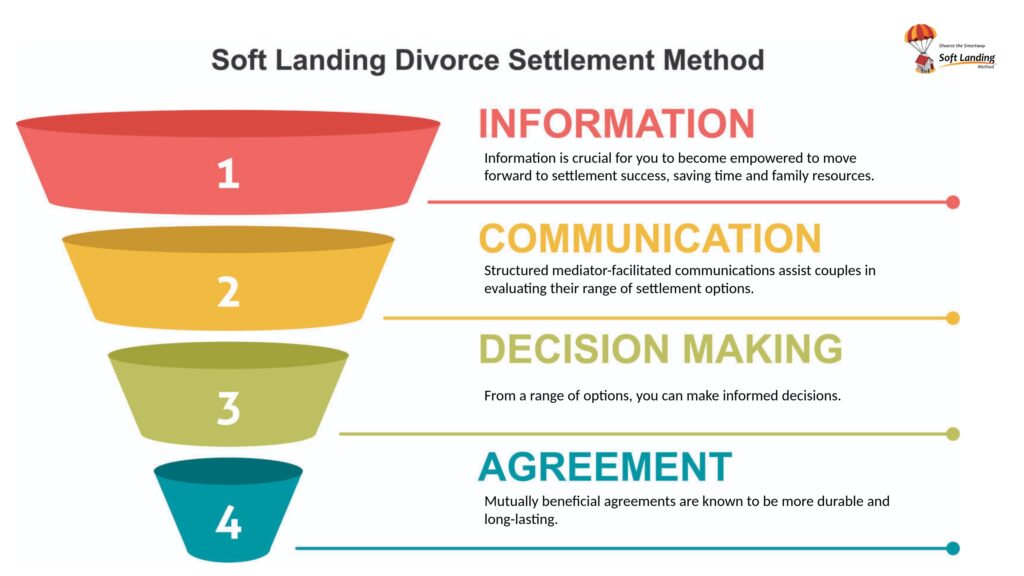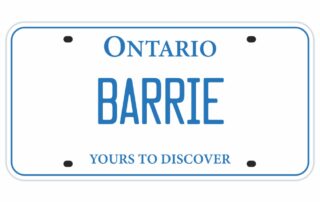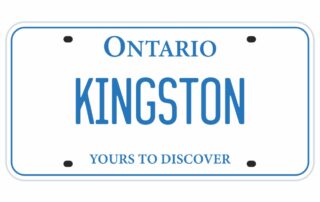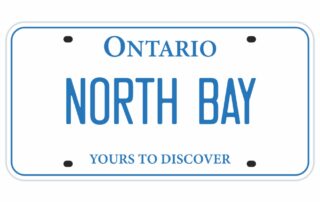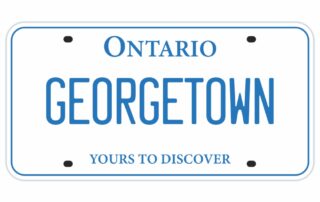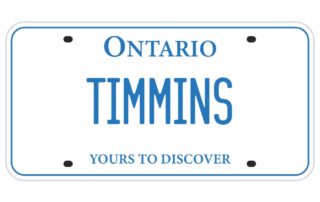Achieving a Soft Landing with No-Fault Divorce in Canada

No Fault Divorce Canada - Understanding No Blame Divorce
Discover how no-fault divorce in Canada simplifies separation by focusing on the marriage breakdown without assigning blame, ensuring a smoother, less adversarial process.
Yes, spousal support eligibility is independent of divorce grounds in Canada
In Canada, spousal support (also called alimony) is determined based on specific financial factors rather than the reason for divorce. The court considers:
- The financial needs of the requesting spouse
- The ability to pay of the other spouse
- Length of the marriage or relationship
- Each spouse’s current income and future earning potential
- Roles and contributions during the marriage
Whether your divorce is no-fault or fault-based has no impact on support entitlement. A family law professional can help determine appropriate support arrangements based on your specific circumstances and provincial guidelines.
A basic no-fault divorce in Ontario costs approximately $1,155, including court fees and document preparation
The total cost of a no-fault divorce in Ontario consists of mandatory court fees and optional professional services. As of 2023, court fees total $669, split into two payments: $224 for filing the application and $445 for the divorce hearing.
The final cost depends on how you choose to proceed:
- Uncontested divorce with self-filing: Approximately $1,155 total (including court fees)
- Mediated divorce: Additional costs vary but generally more affordable than litigation
- Contested divorce: Significantly higher costs due to legal fees and extended proceedings
Couples can minimize costs by choosing an uncontested divorce, using document preparation services, and avoiding lengthy court proceedings. The most cost-effective approach is typically an uncontested divorce where both parties agree on all terms.
Mediation is optional but highly recommended for no-fault divorces in Canada
While mediation is not a mandatory requirement for obtaining a no-fault divorce in Canada, it offers significant benefits for separating couples. A qualified divorce mediator can help facilitate productive discussions and reach mutually beneficial agreements.
Choosing mediation provides several advantages:
- Reduces legal costs compared to traditional court proceedings
- Speeds up the divorce process significantly
- Creates a cooperative environment for resolving disputes
- Helps establish fair arrangements for property division and child custody
- Maintains better relationships between parties, especially important when children are involved
Many Canadian courts actively encourage couples to try alternative dispute resolution methods like mediation before proceeding with litigation, as it often leads to more satisfactory outcomes for all parties involved.
No-fault divorce offers a simpler, more cost-effective path to ending a marriage without proving wrongdoing.
A no-fault divorce streamlines the legal separation process by eliminating the need to prove misconduct or assign blame to either spouse. This modern approach to divorce brings several significant advantages:
- Lower legal costs since less court time and legal documentation are required
- Faster resolution as couples can proceed without gathering evidence or testimony
- Reduced emotional stress by avoiding accusations and confrontational proceedings
- Better co-parenting outcomes due to maintaining more amicable relationships
- Greater privacy as personal details don’t become part of public court records
This approach allows couples to focus on practical matters like property division and parenting arrangements rather than proving fault, leading to more constructive settlements and healthier post-divorce relationships.
Yes, you can obtain a no-fault divorce in Canada without a court appearance if both spouses agree to all terms.
A joint divorce application allows couples to complete their divorce without attending court, provided they have reached a mutual agreement on all essential matters. This streamlined process requires:
- Complete agreement on property division and asset distribution
- Clear arrangements for child custody and support (if applicable)
- Settled terms for spousal support (if relevant)
- Proper completion and filing of all required documentation
Many couples choose to work with a divorce mediator to facilitate these agreements and ensure all legal requirements are met. This approach typically saves time, reduces costs, and minimizes stress compared to traditional court proceedings.
No-fault divorce has no direct impact on child custody decisions, which remain focused on the child’s best interests
Child custody determinations are made independently of the divorce grounds and focus entirely on what arrangement will best serve the child’s wellbeing. The court considers multiple factors when determining custody, including:
- The child’s physical and emotional needs
- Each parent’s ability to provide care and maintain stability
- The child’s existing relationships with both parents
- The child’s ties to school, community and extended family
- Any special circumstances affecting the child’s welfare
Parents can work with family mediators and legal professionals to develop a comprehensive parenting plan that addresses custody and access arrangements, regardless of the divorce type. The goal is always to create an arrangement that provides children with consistency, security and meaningful relationships with both parents.
Separation means physically or emotionally living apart for at least one year before filing for divorce
In Canadian family law, legal separation occurs when spouses begin living separate and apart, marking the breakdown of their marriage. This separation can take two forms:
- Physical separation – living in different residences
- Under-the-same-roof separation – living in the same home but maintaining separate:
- Sleeping arrangements
- Financial accounts
- Daily routines and activities
- Household responsibilities
The one-year separation period must be clearly documented and demonstrated when filing for a no-fault divorce in Canada. Brief attempts at reconciliation during this period, totalling up to 90 days, are permitted without restarting the separation clock.
No-fault divorce requires no proof of wrongdoing, while fault-based divorce requires evidence of marital misconduct
In Canada, the main distinction between these two types of divorce lies in how the marriage breakdown is legally established. No-fault divorce simply requires spouses to live separately for one year before filing, with no need to prove misconduct. Fault-based divorce involves proving specific grounds for marriage breakdown through evidence.
- No-fault divorce benefits:
- Less confrontational process
- Generally faster resolution
- Lower legal costs
- Reduced emotional stress
- Fault-based divorce requirements:
- Proof of adultery
- Evidence of physical/mental cruelty
- Documentation of misconduct
Most Canadian couples choose no-fault divorce as it offers a more straightforward path to ending their marriage while maintaining dignity and privacy.
No-fault divorce became legal in Canada in 1986 through the revised Divorce Act
The introduction of no-fault divorce marked a significant change in Canadian family law. Under the revised Divorce Act of 1986, couples could legally end their marriage without proving wrongdoing by either spouse. This modernized approach requires only:
- A minimum one-year separation period
- Proof that the marriage has broken down
- At least one spouse being a Canadian resident for 12 months
This reform simplified the divorce process, reduced court battles, and aligned Canada’s divorce laws with contemporary social values. Prior to 1986, couples had to prove grounds like adultery or cruelty to obtain a divorce.
In Canada, living separate and apart for at least one year is the main legal ground for no-fault divorce
Under the Divorce Act, Canadian couples can obtain a no-fault divorce by demonstrating marriage breakdown through a one-year separation period. This straightforward process eliminates the need to prove wrongdoing or assign blame to either spouse.
The separation period must meet these criteria:
- Spouses have lived physically separate and apart for at least 12 consecutive months
- At least one spouse intends to live separately and end the marriage
- Couples may attempt reconciliation for up to 90 days during the separation without resetting the one-year clock
- The separation period can begin even if couples continue living under the same roof for financial reasons, provided they maintain separate lives
While not legally required, professional guidance is recommended for no-fault divorces
You can file a no-fault divorce without legal representation in Canada, but having professional support can protect your interests and simplify the process. A divorce lawyer helps ensure all documentation is properly completed and your rights are protected.
Several professionals can assist with your divorce:
- Divorce lawyers – provide legal advice and court representation
- Divorce mediators – help couples reach mutual agreements outside court
- Certified Divorce Financial Analysts – assist with financial planning and asset division
- Family law paralegals – help with paperwork and administrative tasks
Even in amicable separations, professional guidance can help avoid costly mistakes and delays in the divorce process.
Required documents include divorce application, marriage certificate, financial statements, and separation agreements
Filing for a no-fault divorce in Canada requires several essential documents to complete the legal process. The court needs comprehensive documentation to process your divorce application efficiently.
- Divorce Application Form – A completed and signed application detailing marriage breakdown
- Original Marriage Certificate or Registration of Marriage document
- Financial Statements including income, assets, expenses, and debts
- Separation Agreement if one exists between both parties
- Proof of Address and identification documents
- Child Support Documents if children are involved
It’s recommended to work with a divorce professional to ensure all paperwork is properly prepared and filed. Additional documents may be required depending on your specific circumstances and provincial requirements.
In Canada, a mandatory 1-year separation period is required before filing for a no-fault divorce.
Under the Divorce Act, couples must live separately for a minimum of 12 months before applying for a no-fault divorce in Canada. This separation period serves as proof of marriage breakdown and begins from the date when spouses start living apart. During this time:
- Couples can live in the same home for economic reasons but must maintain separate lives
- Brief attempts at reconciliation (up to 90 days total) are permitted without resetting the separation period
- Spouses can create a separation agreement to address practical matters like child custody and property division
- Either spouse can initiate divorce proceedings once the separation period is complete
A no-fault divorce in Ontario requires a one-year separation period and proper court filing procedures.
To obtain a no-fault divorce in Ontario, couples must follow a specific legal process through the Ontario Superior Court of Justice. The most common ground for divorce is living separate and apart for at least 12 consecutive months.
The basic steps include:
- Filing a divorce application with the Ontario Superior Court of Justice
- Serving divorce papers to your spouse and obtaining proof of service
- Completing required financial disclosure and documentation
- Addressing child custody, support, and property division if applicable
- Waiting for court processing and potential hearing dates
Many couples choose to work with a family law professional or mediator to streamline the process and ensure all legal requirements are met. The entire process typically takes 4-6 months after the one-year separation period, assuming both parties agree to the divorce terms.
No-fault divorces typically process 3-6 months faster than fault-based divorces due to simplified procedures
A no-fault divorce offers a more streamlined path to marriage dissolution since neither party needs to prove wrongdoing. This approach significantly reduces both processing time and emotional stress for all involved parties.
- Eliminates the need for lengthy court testimonies and evidence gathering
- Reduces legal costs and paperwork requirements
- Minimizes conflict between separating spouses
- Allows both parties to maintain privacy and dignity
The mutual separation process focuses solely on resolving practical matters like asset division and parenting arrangements, rather than establishing blame. This efficiency makes no-fault divorce the preferred option for most Canadian couples seeking to end their marriage.
Yes, you can obtain a no-fault divorce in Canada without your spouse’s consent after one year of separation.
Under Canadian divorce law, you have the right to file for a no-fault divorce independently once you’ve been separated for at least 12 months. Your spouse’s agreement is not required to proceed with the divorce application. However, they will need to be properly served with divorce papers and given the opportunity to respond.
To facilitate the process, consider:
- Working with a family law lawyer to ensure proper documentation
- Using a mediator to help manage communication and reduce conflict
- Keeping detailed records of your separation date and related documents
- Addressing practical matters like property division and support arrangements separately from the divorce itself
A no-fault divorce in Canada requires a one-year separation period and proper legal documentation.
Obtaining a no-fault divorce in Canada involves a straightforward legal process that begins after spouses have lived separately for at least one year. This separation period establishes the breakdown of marriage as the grounds for divorce.
- Complete and file a Divorce Application with your provincial court, including details about marriage, separation, and any arrangements for children or property
- Pay the required court filing fees and obtain a court file number
- Legally serve divorce papers to your spouse and file proof of service with the court
- Wait for your spouse’s response period (usually 30 days)
- Submit additional documentation if required by the court
- Attend any mandatory court hearings or case conferences
Working with a family law professional can help ensure all legal requirements are met and assist with negotiating settlements for property division, support payments, and parenting arrangements.
File for no-fault divorce in Canada by proving 1-year separation and submitting court application
In Canada, filing for a no-fault divorce requires meeting specific legal requirements and following a structured process. The most common ground for divorce is living separate and apart for at least one year.
Here are the key steps to file for divorce:
- Ensure you meet the one-year separation requirement
- Gather important documents including marriage certificate and financial records
- Complete the required divorce application forms from your provincial court
- File the documents at your local courthouse and pay the filing fee
- Serve the divorce papers to your spouse
- Wait for the mandatory response period
Working with a divorce mediator or family law lawyer is recommended to ensure proper documentation and protection of your legal rights. They can help navigate complex issues like property division, support payments, and child custody arrangements.
Resources on No Fault Divorce in Canada
- How to Apply for a Divorce – Department of Justice – Comprehensive guide on applying for a divorce in Canada, detailing the steps and legal requirements.
- No-fault divorce in Canada: Its cause and effect – An academic paper examining the effects of no-fault divorce laws in Canada.
- No-fault divorce – Wikipedia entry providing an overview of no-fault divorce, including its implications and legal context.
- Everything You Need to Know about No Fault Divorce in Canada – Detailed information about the no-fault divorce system in Canada.
- Simple divorce – Explanation of what constitutes a simple (uncontested) divorce and how it differs from a contested divorce.
- Fact Sheet – Divorce – Fact sheet outlining the key aspects and requirements of getting a divorce in Canada.
- Understanding the Divorce & Separation Process in Canada – Overview of the divorce and separation process in Canada, covering both fault and no-fault grounds.
- Divorce Law in Canada (96-3e) – Government publication on the history and evolution of divorce laws in Canada.
- What is the Divorce Process in Canada? – Detailed description of the steps involved in the divorce process in Canada.
- What is your reason (grounds) for asking for a divorce? – Explanation of the grounds for divorce under the Canadian Divorce Act.
- Do your own uncontested divorce | Family Law in BC – Guide on how to file for an uncontested divorce without appearing in court.
- No-fault divorce in Canada: Its cause and effect – Research article examining the causes and effects of no-fault divorce in Canada.
- Family lawyers discuss fault vs no fault divorce – Discussion by family lawyers on the differences between fault and no-fault divorces.
- The ground for divorce – the breakdown of the marriage – Guide to understanding the legal grounds for divorce, focusing on marriage breakdown as the primary criterion.
- Contested and Uncontested Divorce in Canada – Explanation of the differences between contested and uncontested divorces in Canada.
Ken Maynard CDFA, Acc.FM
I assist intelligent and successful couples in navigating the Divorce Industrial Complex by crafting rapid, custom separation agreements that pave the way for a smooth transition towards a secure future. This efficient process is achieved in about four meetings, effectively sidestepping the excessive conflicts, confusion, and costs commonly linked to legal proceedings. Clients have the flexibility to collaborate with me either via video conference or in-person through a DTSW associate at any of our six Greater Toronto mediation centers, located in Aurora, Barrie, North York, Vaughan, Mississauga, and Scarborough.


